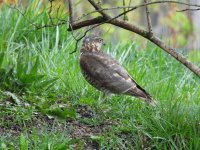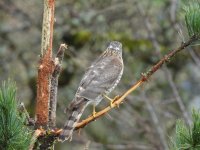Richard Prior
Halfway up an Alp

Just to show how I've not been paying proper attention during my 60 years' plus birding  , I don't recall ever having seen this rufous feathering on the nape, would I be right to assume it's a 1st Winter individual and this area is the last to acquire adult colouring?
, I don't recall ever having seen this rufous feathering on the nape, would I be right to assume it's a 1st Winter individual and this area is the last to acquire adult colouring?
Merci in advance!
Merci in advance!





